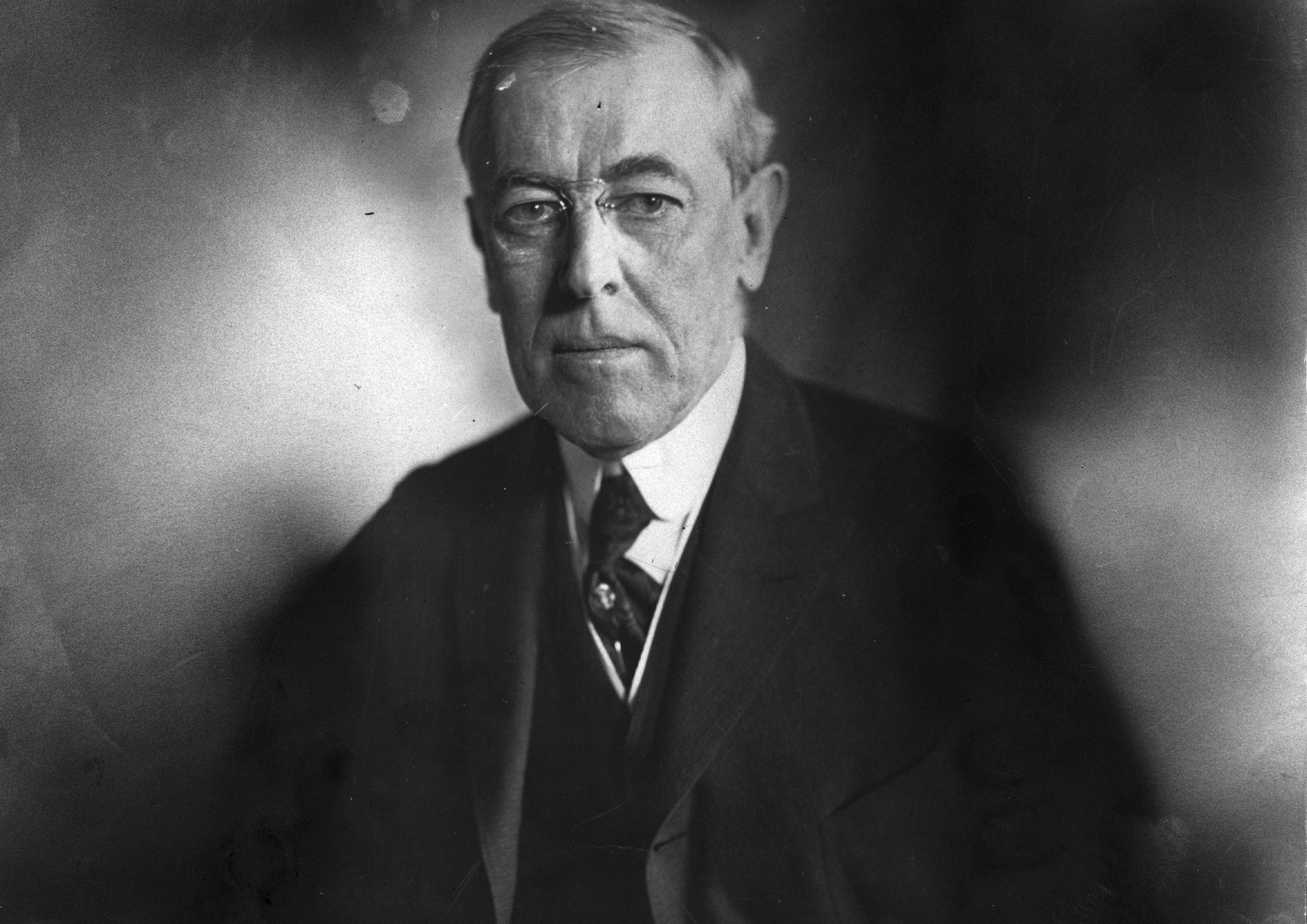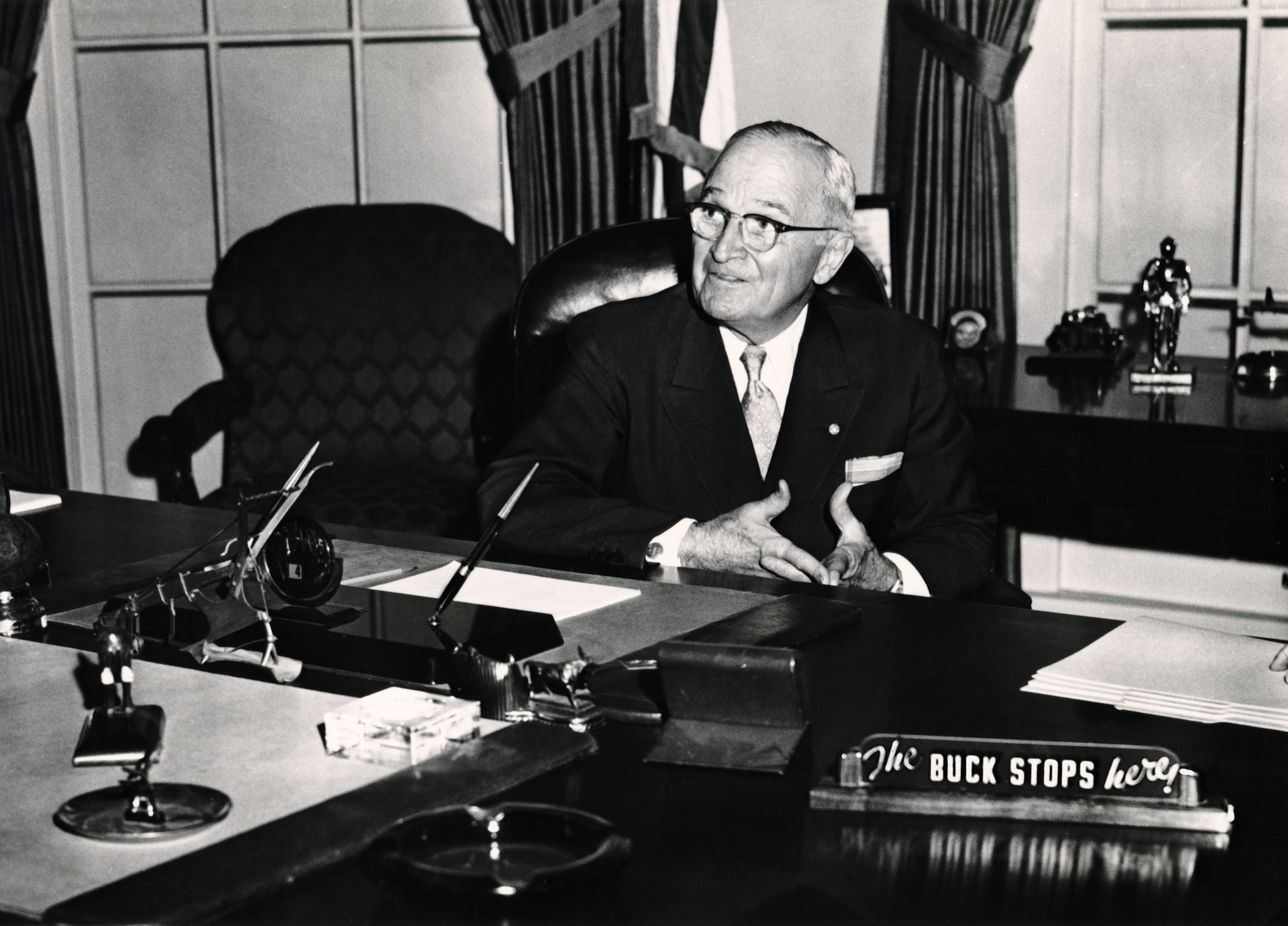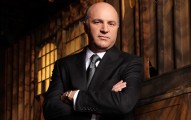As President Obama was about to begin his seventh year in office, he said he was entering the “fourth quarter.” Like him, other modern presidents who reach this point realize that time time is running short. Elections fade to the background, and considerations about legacy tend to come to the forefront.
Yet, seven years in, legacy-making achievements are harder and harder to secure, because presidents headed out the door lose leverage. Both foreign leaders and Congress feel less and less beholden to a president who will be gone soon. They start planning for the future instead.
So, as a follow-up to last year’s ranking of presidential sixth years, here’s an assessment of how every president who’s made it to a seventh year has done, starting with the worst. I’ll note that until 1933, presidential inaugurations took place on March 4, so a president’s seventh year would technically begin on that day. However, since most people think of “years” in terms of calendar years, I’ve stuck to that for simplicity, except for vice presidents who became president unexpectedly midyear.
16) Woodrow Wilson – 1919

Tony Essex/Hulton Archive/Getty
Wilson’s seventh year as president was a disaster — but when it began, he was on top of the world. World War I had just ended, and Wilson spent most of the first half of the year in Paris, helping negotiate what became the Treaty of Versailles. There, he had one main obsession: he hoped to establish a “League of Nations,” an international body he hoped would be “a definite guarantee of peace” (and secure his own place in history). The final treaty indeed provided for this, and a pleased Wilson sailed back to the U.S. to win its approval.
What followed was utter failure — political and, eventually, even physical. Many senators thought the treaty, which would commit the US to militarily defend other League members, gave up too much of the nation’s sovereignty. So Wilson decided to barnstorm the country in hopes of winning the public to his side. As George Herring writes in From Colony to Superpower, Wilson, whose health was already deteriorating, “delivered 42 speeches in 21 days, all without benefit of microphone” in a trip that would span 10,000 miles. Not only was this to no avail, but toward the end of the trip, Wilson collapsed, and soon had a stroke that partially paralyzed him, from which he would never truly recover. (He was badly incapacitated for his final year in office.)
Later on, when Republican senators offered a compromise that would have gotten the US to join the League without any commitment to defend other nations’ security, Wilson spurned their offer. “He seemed almost to welcome defeat,” Herring writes, in hopes that the 1920 election. Nothing of the kind happened — the treaty would never be approved by the United States, and the US-less League would prove completely inadequate to the task of stopping Hitler’s designs in Europe.
15) Ulysses S. Grant – 1875
Grant’s seventh year as president was “a milestone in the retreat from Reconstruction,” historian Eric Foner has written. The recent midterm elections had handed Grant’s Republicans a shocking set of defeats, and things didn’t get better afterward.
The year began with a federal military intervention to prop up the corrupt Republican regime in Louisiana against Democrats and the racist “White League” — an intervention that turned out to be hugely unpopular nationwide, as even many Republicans were growing weary of the seemingly endless federal involvement in the South.
Then, when the 1875 Mississippi elections deteriorated into what Foner calls “a violent crusade to destroy the Republican organization and prevent blacks from voting” — with many assaults committed in broad daylight — Grant failed to seriously step in. White supremacist violence and repression worked, and Democrats retook control of the state. It now “seemed certain,” Foner writes, that no matter which party won the election of 1876, “Reconstruction itself was doomed.”
14) Grover Cleveland – 1895
Not much was going well for Grover Cleveland in his seventh (nonconsecutive) year as president. The nation remained mired in the economic depression that had started two years earlier. Things were so dire that Cleveland had to get J.P. Morgan (the person) to bail out the US government when it was near default — a move that led to a huge public backlash when Morgan and his investment partners profited off the bailout.
Cleveland did have one notable accomplishment abroad, as he successfully intimidated the British into backing down during the Venezuelan Crisis of 1895. But, overall, it was clear that Cleveland had retaken the White House at exactly the wrong time and that his second term was a disaster. He and his pro-business Bourbon Democrats started losing control of their party, and the pro-silver agrarian populist William Jennings Bryan would replace them.
13) Harry Truman – April 12, 1951 – April 11, 1952

Fotosearch/Getty
President Truman’s seventh year since becoming president began with one notable success: the public uproar over his firing of the popular General Douglas MacArthur petered out after a series of Senate hearings. But with a bloody stalemate in the Korean War abroad and various corruption scandals implicating some of his administration officials, the rest of the year wasn’t a happy one for Truman, who had grown deeply unpopular. In March 11, 1952, he even suffered the embarrassment of losing the New Hampshire primary to Estes Kefauver, the leading Democratic senator pursuing those corruption scandals. Though Truman hadn’t campaigned in New Hampshire and was already leaning toward retirement, he had chosen to let his name go on the ballot, so this was a humiliation. Accordingly, just a few weeks later, Truman made it official that he wouldn’t run for reelection again.
12) Thomas Jefferson – 1807
Jefferson’s seventh year wasn’t exactly his best. Congress did finally pass a law abolishing the importation of new slaves into the United States — a long overdue measure, but one that had been effectively guaranteed to pass for years, and had only taken so long because the Constitution had blocked any such policy from going into effect until 1808. Former Vice President Aaron Burr was arrested for an alleged treasonous plot to steal American territory for himself — but despite Jefferson’s best efforts to convict Burr, his trial ended in acquittal.
And the year ended disastrously for Jefferson, when he and his allies in Congress quickly approved the infamous Embargo Act in December. The sweeping new law, intended to punish the warring British and French for harassment of American ships, made all American exports illegal. It would be a diplomatic, political, and practical disaster, and the controversy over it would dominate the rest of Jefferson’s presidency.
11) Ronald Reagan – 1987
Reagan’s seventh year as president was marked by turmoil. The Iran-Contra scandal — in which Reagan’s National Security Council aides arranged the sale of arms to Iran and illegally steered the proceeds to Contra rebels in Nicaragua — had broken late in 1986, and further developments and investigations into the scandal recurred throughout 1987.
Then there were Reagan’s two failed attempts to fill a Supreme Court vacancy — Robert Bork was blocked by Senate Democrats who viewed him as too far-right, and Douglas Ginsburg withdrew his name from consideration when it was reported he had smoked pot. (Anthony Kennedy would eventually be confirmed to fill the seat, meaning conservatives had missed an opportunity to shift the court to the right.)
Yet there were two brighter spots. First was Reagan’s June speech in West Berlin, in which he famously called on Mikhail Gorbachev to “tear down this wall!” (It didn’t get much attention at the time, and only became so iconic later.) But second, Reagan did reach an agreement with Gorbachev on a nuclear arms limitation treaty in December. With the INF Treaty, the US and USSR “for the first time … agreed on reducing the number of nuclear weapons in their arsenals,” writes Herring.
10) Teddy Roosevelt – September 14, 1907 – September 13, 1908
The seventh full year of Theodore Roosevelt’s presidency was marked by some setbacks. The Supreme Court struck down the Employers’ Liability Act of 1906, which biographer Edmund Morris describes as “one of Roosevelt’s proudest legislative achievements.” Furthermore, there was little action on the sweeping legislative program he proposed in his final Message to Congress. Things weren’t all that bad, though — he sent the “Great White Fleet” of battleships to sail around the world on a historic voyage to show off the US’s growing naval power.
9) Dwight D. Eisenhower – 1959
The most dramatic event in President Eisenhower’s seventh year occurred at the beginning, when Fidel Castro’s allies took over Cuba in January. But the effects of this weren’t felt immediately — the U.S. had good relations with the new Cuban government that year. Apart from this, and perhaps the new statehood for Alaska and Hawaii, 1959 was a pretty undramatic year politically. Foreign policy-wise, Eisenhower had a cordial and productive meeting with Soviet premier Nikita Khrushchev at Camp David in September, but this would have little long-term impact, because relations took a turn for the worse the following year.
8) George W. Bush – 2007
There were many bad headlines for George W. Bush in 2007 — the U.S. Attorney firing scandal, the sentencing of former vice presidential adviser Scooter Libby, the departure of longtime allies Karl Rove and Alberto Gonzales from the administration — but the main thing the president cared about that year was his troop surge in Iraq.
In 2006, violence had soared, and Bush’s Iraq war was looking increasingly like a disaster. Yet the president bucked calls to set a timetable for withdrawal, and instead sent 20,000 more troops into the country.
Then, after a few months, violence in Iraq began a remarkable decline. This wasn’t just because of the troop surge — the political realignment of Iraqi Sunnis was a hugely important development, too. And Iraq remains quite troubled today. But still, the surge helped the situation in the short term enough that by September 2008, his successor Barack Obama would say it had “succeeded beyond our wildest dreams.”
7) Franklin D. Roosevelt – 1939

Underwood Archives/Getty
Following a drubbing in the previous year’s midterm elections, Roosevelt turned his attention to defense and foreign affairs in 1939 — just as World War II was beginning in Europe. After Hitler invaded Poland and the European Allies declared war on Germany in September, FDR pushed for and won a repeal of the US embargo on arms sales to warring nations. This was the beginning of Roosevelt’s plan to turn the isolationist American public back toward a war footing — even though he sold the measure to the public as a “Peace Bill.” “A measure promoted to keep the nation out of war,” Herring writes, “provided the means to make it virtually a cobelligerent.” Roosevelt would go on to do just that.
6) Andrew Jackson – 1835
Jackson’s seventh year as president nearly started off with quite a bang — in January, an insane unemployed painter fired two guns at him at both range. Luckily for Jackson, both misfired, and he ended up chasing his would-be assassin off while swinging his cane at him before he was apprehended.
The rest of the year went similarly well for Jackson personally, but very badly for black Americans and Native Americans. In July, Supreme Court Chief Justice John Marshall — a longtime nemesis of Jackson — died at age 79. To fill his seat, Jackson would appoint his own former attorney general Roger Taney. Taney, of course, would later write the infamous Dred Scott v. Sandford decision, which said even free blacks couldn’t be considered United States citizens. Then, in December, Jackson’s Indian removal policy proceeded further, as some Cherokee were pressed into signing a treaty in which they agreed to give up land in Georgia in exchange for money and land in Oklahoma.
Overall, then, it was a terrible year for humanitarian policies. But it was a good year for Andrew Jackson’s political priorities.
5) Bill Clinton – 1999
The first months of Bill Clinton’s seventh presidential year brought the ugly saga of his impeachment to a close — in February, he was acquitted by the Republican-controlled Senate. With this cloud over his presidency gone, the economy booming, and his popularity quite high, 1999 was a very successful year for Clinton. The biggest news story was his successful military intervention in Kosovo — it took several months, but Yugoslav forces were eventually pushed out of the country with no NATO combat casualties. His administration also made a deal to admit China to the World Trade Organization, and — more controversially — he signed a financial reform bill that allowed commercial banks to have investment banking arms.
4) James Monroe – 1823

A painting by Clyde Deland that’s supposed to represent President Monroe and his advisers discussing the Monroe Doctrine. (MPI/Getty Images)
There’s pretty much just one political event that happened in 1823 that we remember today — and that’s the Monroe Doctrine. This was President Monroe’s famous statement that the United States would intervene to block any further European attempts to establish colonies on the American continents (while leaving existing colonies alone).
It wasn’t really clear how Monroe would enforce all this, since the American military and navy weren’t all that impressive. And the statement didn’t seem to have much of an effect on anyone’s calculations in the short term. But his effective assertion that the US viewed the rest of the Americas at its sphere of influence became a cornerstone of the nation’s foreign policy for over a century. (Indeed, it wasn’t formally disavowed until just two years ago, when Secretary of State John Kerry declared that “the era of the Monroe Doctrine is over.”)
3) Barack Obama – 2015
It’s been an eventful year for Barack Obama, who completed a historic nuclear deal with Iran (which survived Congress), negotiated the major TPP trade deal (which is still pending before Congress, and is rather controversial), opened diplomatic relations with a longtime enemy (Cuba), and saw the Supreme Court both uphold his biggest legislative achievement (Obamacare) and legalize same-sex marriage (an issue he was late to the party on) nationwide. All this helped Dylan Matthews to make the case that Obama “is one of the most consequential presidents in American history,” and that “he will be a particularly towering figure in the history of American progressivism.”
Not everything went well, though — he hasn’t had much success in stemming violence in Syria, Iraq, and Afghanistan, and ISIS appears to be demonstrating more sophistication with overseas attacks. And his failure to enact new gun control measures remains his biggest disappointment.
It’s surely far too soon to predict which events of this year will stand out decades later— but as of now, it appears that Obama has had a rather successful seventh year all told, with few of the political and policy setbacks that marked 2014 for him.
2) James Madison – 1815
After a humiliating sixth year that I ranked as the worst sixth year any U.S. president has ever had — the year the White House and much of Washington, DC were burned by the invading British — President Madison finally, finally got some good news as 1815 began, when Andrew Jackson won a smashing victory at the Battle of New Orleans in January.
In the following month he got some even better news: word finally arrived that Madison’s negotiators in Europe had signed a peace treaty with the British back in December — and that the war of 1812 was finally over. No, the US didn’t win any substantive concessions from the British on the matters they had gone to war over. But, Daniel Walker Howe writes in What Hath God Wrought, “If the war and its economic hardships had dragged on much longer, the federal government, the Constitution, and the Republican Party might not have survived intact. With peace, they all did.”
1) George Washington – 1795

Saul Loeb / AFP / GettY
The most unpleasant presidential year for George Washington was probably his seventh, for one main reason: the Jay Treaty, which, in Ron Chernow’s words, “created a hullabaloo such as American politics had never seen.” Yet, in the long run, it actually looks really good.
Washington had sent John Jay to Europe in hopes of making an agreement with Britain that would avert a war. But when he came back and the terms of the treaty leaked out, it seemed to a whole lot of people — even some Federalists — that Jay gave far too much away. There was a popular uproar, which was fanned by French-sympathizing Democratic-Republicans (Jay was burned in effigy, and stones were thrown at Alexander Hamilton when he was trying to defend the treaty in public).
But, importantly, the treaty averted another war with Britain at a time when the young United States really wasn’t ready for it. So it was approved by the Senate by the narrowest possible margin, and Washington signed it. Another diplomatic success — Pinckney’s Treaty, a friendship treaty with Spain — followed (it was spurred by the US-British accommodation). And a military victory against Native Americans in the Ohio Country led to the Treaty of Greenville, which forced the Native Americans to give up much of their land there.
Together, all these treaties “secured the territorial integrity of the United States in a way the diplomacy of the Confederation had been unable to do,” writes Gordon Wood in Empire of Liberty. So overall, Washington’s seventh year goes down as a pretty major success.
Powered by WPeMatico







